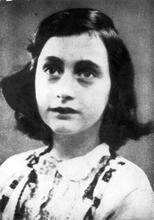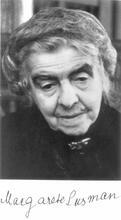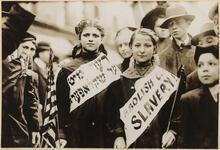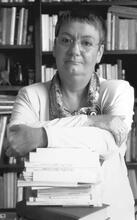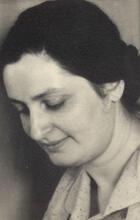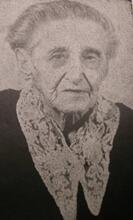Higher Education in Central Europe
Acculturated Jewish society saw higher education as a way of integrating itself into the educated bourgeoisie, and Jewish families often supported their daughters morally and financially. In 1867 the University of Zurich became the first in Central Europe to admit women as matriculated students. Austrian and German universities began to admit women around the turn of the twentieth century. Although Jews comprised less than one percent of the Prussian population, Jewish women constituted 28 percent of female medical students in Prussian universities in 1911. Jewish women were thus pioneers, especially in medicine and natural sciences. Jewish women continued to be disproportionality represented at universities in the interwar years. Attending university offered women greater personal independence, even as they faced antisemitism and ridicule.
Many more Jewish men than Jewish women received a higher education in Central Europe before the Nazi era, but once Swiss, and later Austrian and German, universities began admitting women, the proportion of Jewish women among the female student population remained at least twice as high as the proportion of Jewish men among male students.
Before the mid-nineteenth century, virtually all institutions of higher learning in Central Europe were closed to women. Only on rare occasions did individual women receive permission to study as auditors at a university or in a medical school. In the United States, England and Russia, colleges and universities also severely restricted access for women, but private women’s colleges and special courses, as well as medical schools, for women developed in the late nineteenth century. In Germany, Austria-Hungary, Switzerland, and France, however, the only institutions for advanced learning and professional training were the public universities, which were strictly male and predominantly Christian. Central European universities served primarily as professional schools to train clergy and civil servants, as well as physicians and lawyers. Jewish men gained entry to German-speaking universities several generations before women were allowed to matriculate. They had already begun to study medicine in Germany in the eighteenth century; during the nineteenth century, they also entered the faculties of philosophy and law in increasing numbers. Universities in Switzerland began to admit female students after 1867, but women were not permitted to matriculate at German or Austrian universities until the turn of the twentieth century.
Jewish University Women
Scholars studying women’s higher education in Central Europe have been struck by the extraordinarily high percentage of Jews among the women students in Germany and Austria, especially prior to 1920. Why did Jewish women constitute such a high proportion of the first two generations of Central European university women and hence of pioneering European women professionals?
A high proportion of Central European Jews belonged to the “well-situated” middle class, which could afford the luxury of educating their daughters, as well as their sons. Jews tended to live in large cities where major universities were located; as a result, their daughters could often attend university without leaving home. Many of the fathers, uncles and brothers of middle-class Jewish women had acquired a university education and greatly esteemed the value of higher learning. Perhaps most importantly, the secular Jewish culture developing in acculturated Jewish homes fostered the pursuit of higher education for both men and women as a means of more effective integration into the Bildungsbürgertum, the educated bourgeoisie.
Acculturated middle-class Jewish families in Central Europe in the late nineteenth century tried to provide both their sons and their daughters with the best secular education available to each sex. They desired to speed their children’s integration into German society by preparing their sons for successful careers in business or the liberal professions and improving their daughters’ marriage prospects. In the modern era, upwardly mobile Jews often transferred their traditional commitment to learning from the religious to the secular domain and no longer restricted education to their male offspring.
Jewish families often encouraged their daughters’ pursuit of higher education by providing them with both moral and financial support, even though some parents feared that attending university might hamper, rather than help, their daughters’ marriageability. Given a strong preference for endogamy in most Jewish families and the relatively low rate of inter-faith marriage among Jewish women but somewhat higher rate for Jewish men, some young women and their families might have been concerned about a possible shortage of appropriate spouses. Should a bright young woman decide not to marry, she would need a worthwhile alternative. Because of discrimination against Jews in the teaching profession in Central Europe, Jewish girls who wished to become self-supporting often had to consider training for occupations other than teaching. Attending university opened up new and exciting career possibilities for women who desired greater self-fulfillment and were not certain about their marriage prospects.
Secondary Education for Jewish Girls
In earlier eras, few Jewish women had received much formal education outside the home, but by the late eighteenth century it was not uncommon for wealthy Jewish families in Central Europe to provide private tutors for their daughters to teach them such fashionable refinements as literature, French and piano. In the nineteenth century, Jewish girls began attending schools, at first mainly privately owned or Jewish institutions, but later state-supported public girls’ schools as well. By the end of the nineteenth century, it had become very common for adolescent Jewish girls to attend either public or private secondary schools for girls, variously known as Höhere-Töchterschulen, Höhere-Mädchenschulen or Mädchen-Lyzeen, completing their formal education by the age of sixteen.
Around the turn of the century, a much higher percentage of Jewish than Christian children, especially girls, received a secondary school education in Central Europe. The contrast was particularly striking in large cities, such as Berlin and Vienna, but also apparent in smaller cities and towns. In Berlin, at least half of the Jewish children went beyond an elementary school education, while only about 10 percent of the Christian children did so. Whereas Jews made up about 5 percent of the population of the German capital, Jewish boys accounted for a quarter of the classical Gymnasium students and almost 20 percent of the modern Realgymnasium students, while Jewish girls made up over 20 percent of the students in girls’ secondary schools, both public and private, and almost a third of the students in public girls’ high schools. In Vienna, where Jews constituted about 10 percent of the population, Jewish boys made up 30 percent of the Gymnasium students and Jewish girls roughly half, and sometimes an overwhelming majority, of the students in private Mädchen-Lyzeen.
Obstacles to the Pursuit of Higher Education
A Gymnasium education, completed by age eighteen or nineteen, prepared boys for passing the Abitur or Maturamatriculation examinations, the entrance requirement for all universities in Germany and Austria, as well as Switzerland. The Abitur involved a series of fairly rigorous oral and written examinations in a variety of fields, including Latin, Greek, German language and literature, history, mathematics, physics, and religion. Before the turn of the century, neither public nor private girls’ secondary schools provided the requisite curriculum for meeting these matriculation standards; even the finest girls’ private school education emphasized modern languages rather than Latin and Greek and spent little time on mathematics or sciences. Such subjects were considered too difficult for the female brain and of no practical value for girls, especially since German and Austrian universities did not yet admit women as regular students.
In Russia, Gymnasia for girls had begun to open up during the second half of the nineteenth century for the primary purpose of educating teachers. Young middle-class Jewish women eagerly streamed into these institutions in order to receive previously inaccessible academic training. Unlike boys’ Gymnasia, the female equivalents in Russia were not intended as preparation for university entrance examinations, but they did provide instruction in German, Greek and Latin as electives. Young women from Eastern Europe were less prepared for university than most young men with Gymnasium training, but they were sometimes admitted to institutions of higher learning, despite their inferior academic qualifications. Nevertheless, they generally had a better foundation for passing Swiss Abitur examinations than young women who completed German or Austrian secondary schools for girls in the nineteenth century and then had to study privately before taking matriculation examinations.
Whether Jewish or Christian, young women in Central Europe who wanted to pursue higher education had to overcome numerous obstacles before they could embark on university studies. First, they had to deal with parental objections and social stigmas facing women who wanted to enter male educational and professional spheres. Among the earliest generation especially, women students tended to be somewhat older than their male counterparts, since their entry into university often had to be delayed for many years until hurdles could be surmounted. Preparation for the Abitur examination presented a major hurdle for young women who did not have access to a girls’ Gymnasium, the first of which was established in Karlsruhe, Germany, in 1893. Although some university women among the older generation received nearly all of their education at home from governesses and tutors, most attended private or public girls’ schools (Mädchen-Lyceen). Girls’ schools provided an adequate foundation in such subjects as modern languages, geography and history, but did not prepare their pupils for the matriculation requirements in Latin, Greek, mathematics or physics. Hence, after completing the standard curriculum for girls, women had to make up all the material they had missed by not being able to attend Gymnasium. Some chose to prepare for their matriculation examinations through several years of intensive private tutoring, particularly in mathematics and science. Others opted for special “cram courses” for young women, which provided very intensive preparatory training in those fields not taught in girls’ schools.
Setting a Precedent in Russia & Switzerland
Jewish men stood out as disproportionately represented among university students, but Jewish women were even more conspicuous among the vanguard of women studying at institutions of higher learning, especially medical schools, in Western and Eastern, as well as Central, Europe. The first woman physicians trained in Holland and Russia were Jews, as was the first Austrian woman to receive her medical degree in Switzerland. Aletta Jacobs, born in 1854, needed authorization from the Dutch Prime Minister in order to study at a university and become the first woman physician in the Netherlands. After receiving her doctorate in medicine in 1878, she established the first birth control clinic in the world and later became a prominent Dutch feminist and pacifist. Varvara Kashevarova-Rudneva, a midwife born in 1842, also had to receive special permission to attend the Medical Surgical Academy in St. Petersburg in 1863. After qualifying as a physician and overcoming many obstacles, she became the first woman to receive her medical degree in Russia, also in 1878.
Soon other Eastern European Jewish women began following Kashevarova-Rudneva’s example by pursuing higher learning and becoming physicians. In Tsarist Russia, as in the United States and England, special programs were established to train women as medical doctors and in other fields. Jews were very highly represented in the new women’s courses initiated in Russia in the 1870s and early 1880s. Soon thereafter, however, quotas were introduced for Jews and new restrictions were imposed upon the education of women within Russia. As a result, numerous Eastern European Jews of both sexes decided to go to Switzerland and, later, Germany and Austria, in order to attend university.
In Central Europe, where separate colleges or medical schools for women never emerged, women were barred from pursuing a higher education or careers in professional fields until they were given permission to matriculate at universities. In 1867, the University of Zurich became the first in Central Europe to admit women as matriculated students; Bern and Geneva followed soon thereafter. A majority of the women studying in Switzerland before World War I hailed from Tsarist Russia; of the estimated five thousand Eastern European women students, three-quarters of whom studied medicine, between 60 and 80 percent were Jews. Most of the Jewish women physicians trained in Switzerland returned to practice medicine in Russia, but others remained abroad. Some Swiss-educated physicians, including Helena Kagan, Alexandra Belkin-Hankin, and Vera (Chatzmann) Weizmann, later emigrated to Palestine.
Many of the Eastern European Jewish women who studied at Swiss universities became actively involved in radical socialist movements. After returning to their homeland, some became prominent in Social Democratic politics, especially as Mensheviks, whereas others were active in the Bund. Undoubtedly the best known among the Jewish women revolutionaries who received their higher education in Switzerland is Rosa Luxemburg, who earned a doctorate in economics from the University of Zurich in 1897, before becoming the leading ideologist of the German Social Democratic Party.
Pioneers in Central Europe
The early female pioneers who left home to study at Swiss universities in the late nineteenth century included a somewhat smaller contingent from Germany and Austria. Among the Central European Jewish women trailblazers were four Welt sisters from Czernowitz, Bukovina, whose efforts to study at the University of Vienna in the 1870s had met with failure. Rosa Welt, who was born in 1856, graduated from the University of Bern in 1878 and became the first Austrian woman to receive a medical degree. Her sisters, Sarah and Leonore, earned similar degrees from Zurich in 1885 and 1888, while the youngest sister, Ida, obtained her doctorate in chemistry from Geneva in 1895. Although most of the foreign women who studied in Switzerland returned to their homelands, none of the Welt sisters went back to Austria, perhaps due to lack of professional jobs for women. Leonore Welt Gourfein, an ophthalmologist who later became an unsalaried instructor (Privatdozentin) at the University of Geneva, continued to live in Switzerland, as did her sister, Ida. Rosa Welt Strauss and Sarah Welt Kakeles both emigrated to the United States and practiced medicine in New York; Rosa Strauss moved to Palestine in the 1920s.
To improve the education of middle-class Central European women and their occupational prospects, the women’s rights movements in both Germany and Austria struggled for several decades to gain access into universities. Although some women, especially foreigners, including both Americans and Russians, managed to study as special students or auditors, German and Austrian universities began admitting women as regular students only around the turn of the century: Austria in 1897, Baden in 1900 and Prussia in 1908. Once German and Austrian institutions of higher learning finally opened their doors, many more women were able to take advantage of the new opportunities to study and embark on professional careers without going far from home.
Once again, Jews were strongly represented among the female pioneers, especially in medicine and the natural sciences, but also in law and the social sciences. Among the notable pioneering students around the turn of the century who were natives of Germany or Austria were Rahel Goitein Straus at the University of Heidelberg and Irma Klausner(-Cronheim) at Halle, both in medicine; Elsa Neumann at the University of Berlin and Lise Meitner at the University of Vienna in physics; and Clara Immerwahr in chemistry at the University of Breslau. Having been admitted as a special student, Alice Salomon earned her doctorate in economics at the University of Berlin in 1905, several years before women were officially allowed to matriculate at Prussian universities. Even though women were not admitted to Austrian law schools or to the German bar until after 1919, several Jewish women, including Margarete Berent and Margaret (Meseritz) Muesam-Edelheim, earned law degrees in Germany before the outbreak of the war.
Overrepresentation of Jewish Women Students
Unlike in the United States, Tsarist Russia and interwar Hungary, no formal or informal anti-Jewish quotas hampered access to universities in Germany, Austria, or Switzerland, except for certain restrictions against foreign students after World War I. Once women gained access to Central European universities, Jewish women enrolled in nearly all institutions of higher learning in disproportionately large numbers even before the outbreak of World War I and continued to do so during the interwar years. Thus, Jewish university women remained much more conspicuously over-represented among the overall female student population in Central Europe before 1933 than on the American scene prior to World War II.
Many of the Jewish women enrolled as students and auditors in Berlin and Vienna before 1914 hailed from Eastern Europe. Before World War I, Jewish women made up over 70 percent of the female foreign students from Russia at the University of Vienna, whereas Austrian Jewish women, many of them from Galicia, comprised between a quarter and a third of the women students in the faculty of philosophy and a majority of the women medical students. Although Jews comprised less than one percent of the Prussian population, Jewish women made up 18 percent of the female students at Prussian universities in 1908, when women were first admitted, and 28 percent of the medical students in 1911.
During the interwar years, the absolute number of Jewish women students continued to increase steadily, but the proportional overrepresentation of Jewish women began to decline once university attendance became more popular among Protestant and Catholic women. During the academic year 1928/29, 884 Jewish women constituted 7.2 percent of all women students at German universities. Within philosophy faculties, 345 Jewish women made up 4.4 percent of the women enrolled in the humanities and sciences; 329 Jewish women enrolled in medical faculties represented 13 percent of all female medical and dental students; and 208 Jewish women studying in law and related faculties amounted to 13.4 percent of the women studying law and social sciences in Germany. At the University of Vienna, during the 1933/34 academic year, 539 Jewish women constituted 19.7 percent of the female student population, including 12.6 percent of the women students in the arts and sciences, 37.8 percent of the medical students, and 20.1 percent of the law students in the Austrian capital.
Student Life in Central Europe
In the late nineteenth and early twentieth century, Central European universities were decidedly male institutions, designed to train men for traditionally male professions: medicine, law, civil service, academia, and high school teaching, as well as the clergy. All professors were male, as were the vast majority of students. Fraternity life, with its emphasis on drinking and dueling, dominated the social scene at most universities. German-nationalist fraternities and student organizations excluded Jews, and Jewish fraternities, whether Zionist or liberal in orientation, excluded women students from membership.
Pioneering women students, especially in medical school, often had to contend with ridicule from professors in lectures and oral examinations as well as heckling from male students, since many men were reluctant to accept women as their students or colleagues. But despite discrimination, negative stereotypes of female students, and, in some cases, economic hardships, attending university offered Central European Jewish women greater personal independence and the possibility of a freer life-style than was generally available to middle-class women of their day, while at the same time broadening their intellectual and career horizons. In an age when young girls were normally expected to remain in their parental home until marriage, embarking on a university education often meant leaving home and living on one’s own for the first time. Although some students commuted, most university women lived away from home at some point during their student years and many studied at more than one university, since transferring among universities was commonplace for both men and women, especially in Germany.
Like Jewish men and like women students in general, Jewish women tended to gravitate to the larger urban universities, rather than smaller and somewhat isolated provincial institutions. Thus, the largest numbers of Jewish women flocked to the universities of Vienna and Berlin, while significant numbers were also attracted to the universities of Munich, Breslau, Bonn, Leipzig, Königsberg and, during the interwar years, the recently established universities of Frankfurt, Cologne and Hamburg. Among the most popular places for Jewish women students to spend one or more semesters during their university years were Heidelberg and Freiburg, two universities in mid-size towns in Baden, which were known for their beauty and their student life.
Jewish women students in Germany and Austria were generally very much on their own as individuals and did not participate actively in student organizational life, which tended to be male, German-nationalist or Christian in composition and orientation. Since dormitories for women students, especially of a nondenominational variety, were uncommon at Central European universities, women students away from home had to find private lodging, although they sometimes ate meals in student mensas (or dining halls). The vast majority of Jewish university women did not affiliate with women’s student organizations, although some joined co-ed socialist or Zionist student associations, especially during the interwar years. Like male Jewish students, many female Jewish students, particularly among the younger generation, were decidedly left-wing, either social democratic or communist, in their political identification. Attempts to form Jewish women’s student organizations, even at universities with large female Jewish populations like Berlin or Vienna, were not very successful and rarely lasted for very long. By and large, Jewish university women tended not to be joiners. They enjoyed social activities and friendship circles with other students, both Jewish and non-Jewish, but seldom became active in either women’s or Jewish organizations.
Although Central European Jewish university women often denied experiencing any kind of discrimination personally directed against them, whether as women or as Jews, during their student days, at least before 1933, both misogyny and antisemitism persisted on university campuses. On the whole, before World War I, their gender seemed to cause members of the older generation of Jewish university women a greater disadvantage than their Jewishness; however, during the interwar years antisemitism steadily increased in the academic world. Women experienced antisemitism first-hand among professors and students at university, particularly in the immediate aftermath of World War I and again in the 1930s. Jewish women who were foreign students from Eastern Europe met with even greater hostility than native-born students and were frequently denied professional accreditation. Once the Nazis came to power in Germany in 1933 and in Austria in 1938, Jewish students were systematically excluded from universities in the German Reich, although some were able to continue their studies in Switzerland or elsewhere. Even before the Holocaust, the era of overrepresentation of Jewish students, both female and male, at German and Austrian universities had come to an end. Only by scattering to all corners of the globe could Central European Jewish university women and men manage to survive.
Albisetti, James C. Schooling German Girls and Women: Secondary and Higher Education in the 19th Century. Princeton, NJ: Princeton University Press, 1988.
Bonner, Thomas Neville. To the Ends of the Earth: Women’s Search for Education in Medicine. Cambridge, MA: Harvard University Press, 1992.
Burchardt, Anja. Blaustrumpf-Modestudentin-Anarchistin? Deutsche und russische Medizinstudentinnen in Berlin 1896–1918. Stuttgart: Metzler, 1997.
Freidenreich, Harriet Pass. Female, Jewish, and Educated: The Lives of Central European University Women. Bloomington, IN: Indiana University Press, 2002.
Heindl, Waltraud, and Marina Tichy, eds.“ “Durch Erkenntnis zu Freiheit und Glück ...”: Frauen an der Universität Wien. Vienna: WUV-Universitätsverlag, 1990.
Hirsch, Luise. From the Shtetl to the Lecture Hall: Jewish Women and Cultural Exchange (Studies in Judaism). Lanham, MD: University Press of America, 2013.
Huerkamp, Claudia. Bildungsbürgerinnen: Frauen im Studium und in akademischen Berufen, 1900–1945. Göttingen: Vandenhoeck & Ruprecht, 1996.
Huerkamp, Claudia.“ “Jüdische Akademikerinnen in Deutschland, 1900–1938.” ” Geschichte und Gesellschaft, 19 (1993): 311–31.
Neumann, Daniela. Studentinnen aus dem russischen Reich in der Schweiz, 1867–1914. Zurich: Rohr, 1987.
Rohner, Hanny. Die ersten 30 Jahren des medizinischen Frauenstudiums an der Universität Zürich, 1867–1897. Zurich: Juris Druck, 1972.

